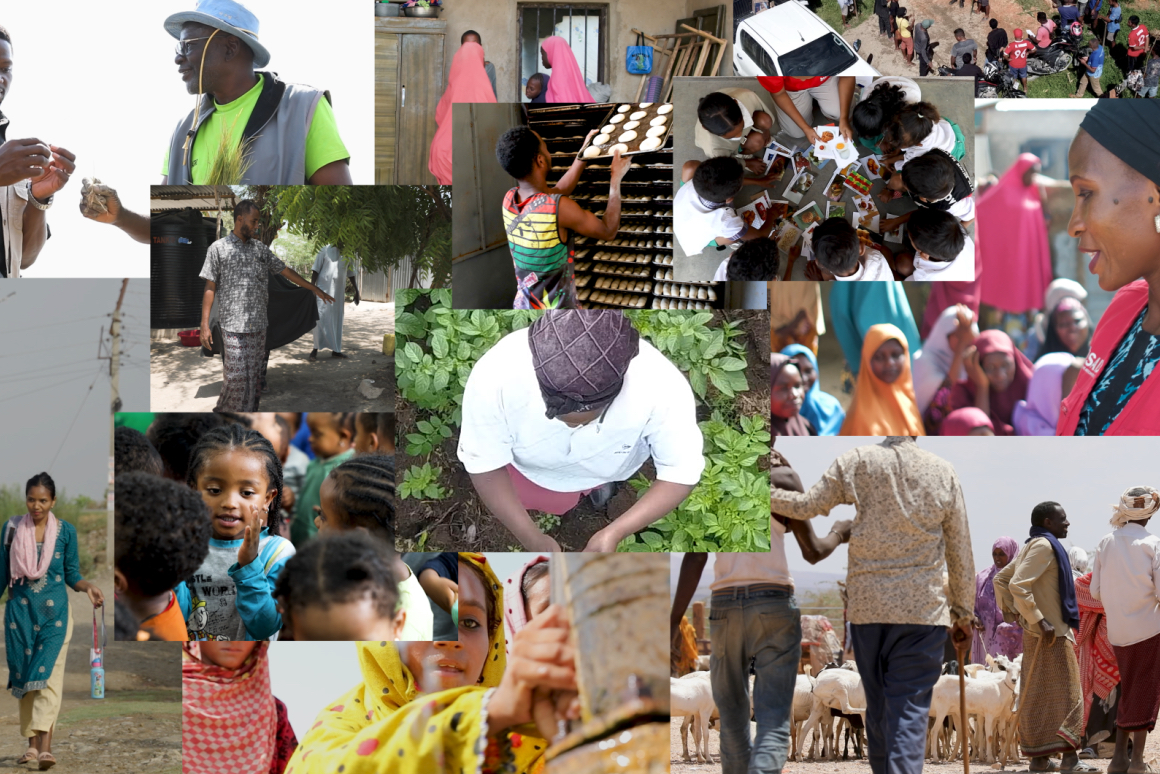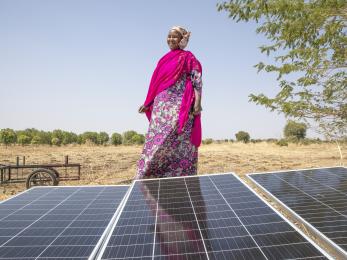A new angle for investing in climate resilience: Land use

Mercy Corps Ventures, the venture capital arm of Mercy Corps, invests in startups building climate resilience and financial resilience for communities across the world. We’ve supported 30+ ventures to scale and raise over $100 million in follow-on capital. Read on to learn about the role our ventures play in building a world where everyone can prosper.
Whether overtly flagged or not, land use is at the heart of nearly all discussions on climate change and adaptation. Extractive economic systems, market failures and mismanagement of our collective commons have driven us to intensify pressure on degraded land, incentivise harmful agricultural practices and ultimately, expand the destruction of our biodiversity.
In building out our Climate Resilience thesis at Mercy Corps Ventures (MCV), we have long recognised that there is the confluence of powerful commercial and impact opportunities within the land use space — from incentivising smallholders to adopt sustainable practices and improving supply chain resilience, to the creation of new risk transfer and financial products centered around non-extractive land use models.
To catalyse a shift in land use that meaningfully moves the bar, we are exploring the following areas…
Land tenure
The scale of land insecurity is daunting; approximately 72% of the world’s population—more than 4 billion people—live on physical property for which they do not hold formal rights or documentation. In many countries, people have little, if any, protection for their land, and are vulnerable to the risk of land disputes, fraud, and evictions. In fact, in many countries, landlessness is used as the core predictor of poverty. So property rights represent the key institutional asset on which people often build their livelihoods.
The World Bank considers “secure land tenure… central to the fight against climate change.” From an adaptation perspective, a growing body of research is concluding that land tenure is critical for the individual and collective adoption of any adaptation practices, assets, or strategies. A recent study from Benin concluded:
"…land ownership has a positive effect on the decision to adopt any adaptation strategy. Subsequently, securing farmers’ property rights would help to enhance their capacity to adapt to climate change."
As we approach grand challenges in food security and rural livelihoods linked to climate change, secure land tenure is a foundational step toward sustainable and equitable land use.
Models and technologies that are able to attribute land use history (as a form of digital ID) and/or secure land tenure for individuals and communities present a massive opportunity. In urban areas, secure land tenure unlocks wealth (perhaps upwards of $10 trillion), commerce, and infrastructure; in rural areas, it is the basis for more resilient supply chains that corporations, regulators, and consumers are looking to build. In agriculture specifically, farmers have little incentive or ability to take on the massive financial risk and disruption to engage in yield enhancing replanting programmes and activities. But, with formal land titles, smallholders have security and ownership, allowing them to unlock access to the tools they need to improve their livelihoods, and are more likely to invest in productivity and expand production.
Exciting solutions are emerging in this space. Meridia allows its agribusiness customers, like the Hershey Company and Unilever, to use the underlying surveying data to extend customary and formal titles to smallholders in their value chain. And Suyo has been recognised as a leader in Colombia for facilitating thousands of formal hard titles to households living in post-conflict zones and urban settlements.
Geospatial data collection and analytics
This encapsulates data layers from the first mile (such as who occupies or farms a plot of land, the age/type/quality of crops or soil, etc.) to the community level (infrastructure, hydrology maps, commercial hubs) to the national or regional level (terrain, political boundaries, ports). Advances in remote sensing over the past 40 years have unlocked amazing capabilities (like measuring carbon sequestration in soil, powering precision agricultural advice and autonomous farming or predicting floods) that could dramatically alter the land use behavior and incentives of individuals, communities, and governments.
The first mile data layer remains elusive and expensive in emerging markets; it is also critical to the design, validation, and distribution of nearly all products and services (from ground truthing a parametric insurance product to optimising a precision agriculture algorithm to the issuance of carbon credits).
Within this sub-theme, startups are building, consolidating and/or validating critical data layers and generating novel analytics on top of these. Cloud to Street leverages a range of satellites and its proprietary algorithms to continuously monitor over 122 million people globally for flood risk in real-time. Not only does this support improved planning and disaster response, but is serving as the foundation for the creation of an entirely new suite of flood insurance products. Alongside land tenure, Meridia is a world leader in first-mile surveying and data collection, with the proven ability to generate hyper-detailed farm data on over 2,000 smallholder parcels a week for the supply chains of some of the world’s biggest agribusinesses (i.e. Unilever, Mondelez).
Finance / Web3
This bucket builds upon the first two — and is where things get exciting. As an example, a major inhibitor to farmers to adopt regenerative agricultural practices is a lack of right-fit, long-term financing. This might require letting land lay fallow, leaving farmers without an income stream for a few years and then requiring a large investment in an entirely new planting scheme.
Risk transfer products, like agricultural microinsurance (see leaders like Gramcover, Pula, and WRMS), are perhaps the first wave of financial products and most directly linked to adaptation. By providing downside protection against catastrophic events, these insurance products ensure farmers don’t get caught in a poverty trap and are in a position to build a long-term business. Powered in part by remote sensing, their proprietary models, datasets, and trust is also unlocking additional value for farmers:
Rather than associating risk management with loss and compensation we are now talking more about mitigating the risk and improving the yields of the farmers
Anuj Kumbhat, Co-founder & CEO, WRMS
We have also been heartened by two new developments: the buoying of the carbon markets and the emergence of decentralised finance (DeFi) and Web3. While the carbon markets are volatile, they inherently represent a new structure for economically rewarding non-extractive and sustainable land use.
While early, we are seeing projects and startups leveraging the unique advantages of Web3 (transparency, new economic incentive models, ability to quickly mobilise a global community) to reimagine how carbon markets can drive an entirely new paradigm of land use. If you need to coordinate billions and trillions of economic activity, crypto and Web3 is potentially the bottom-up architecture and approach to make it happen. Protocols themselves are reorienting themselves toward this end and making bold moves to ground their reserves in real world sustainable assets. Celo’s Climate Collective is a prime example of this (and one which we are particularly excited about given that Celo is optimally built for use in emerging markets).
This space is new, but burgeoning — Loam, Moss.Earth, Nori, and Klima DAO are a few we have been tracking closely the past year. Terra0 is perhaps one of the more intriguing projects. Built on the Ethereum network, this decentralised self-owned cybernetic forest aims to create a new economic model for resilient ecosystems.
While the scale of collective action needed to confront climate change is daunting, the increasing confluence of the three areas above means the flywheel is starting to spin. For Web3 to deliver on its true promise (e.g. to reach those most marginalised, at-risk and excluded from current systems), it will have to build upon the data, analytics, contracts (explicit or customary) and other innovations unlocked via recent advances in geospatial tech and land tenure. Over the next two to three years, we believe there will be a healthy constellation of investment opportunities that meet the moment we are in.



